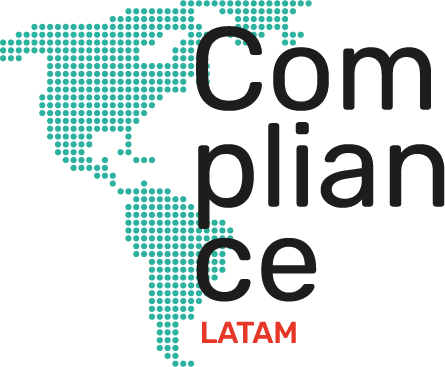
24-05-2024 | Noticias-en
The Ministry of Foreign Trade, through decree No. 44447-COMEX-H, issued reforms to articles 110, 111 and 111 bis of the Regulations to the Free Zone Regime Law.
The reforms introduce changes to customs procedures in inventory operations, recycling and destruction of goods under the free zone regime.
Important points to consider about the reform.
- New provisions regarding deadlines for communicating minutes to Customs Control.
- The requirement for prior authorization by Customs Control to proceed with destruction and recycling operations is eliminated.
- New provision on the power of Customs Control to inspect the destruction or recycling process at any time without implying a rescheduling of this or others in progress.
- New provision in destruction processes, on the need to have the presence of a witness.
For more information contact info@blplegal.com

21-11-2023 | Noticias-en
Normally, we associate free zones with exports of goods and very frequently with medical devices. However, service exports in Cosa Rica, according to COMEX statistics, indicate that they have had an annual growth rate of 6%, reaching the figure of US$ 11,790 million in 2022 and of this a significant number has been focused in the technology.
Costa Rica expanded its focus to strengthen the services sector and continued to promote foreign investment from manufacturing companies dedicated to the technology and medical devices sector. This was possible by taking advantage of the country’s bilingual workforce and its strategic position in the region. To achieve this objective, the following are considered key milestones that allowed this transformation: i) introduction of high-tech services, ii) training of a highly qualified workforce, iii) the strategic positioning of the country for the region and iv) the expansion of the type of services that were sought to be brought to Costa Rica, this related to encouraging high-tech companies to be part of this group of investors.
Now, Costa Rica’s transformation into service-focused free zones is not going without challenges. On November 16, during the BLP Free Trade Zone Leaders Forum conference , there was the opportunity to discuss the challenges that currently plague companies under the regime with members of both the public and private sectors. Of which, it was possible to highlight:
Talent Retention: As the service sector continues to grow, the competition to find qualified labor has become an intensive task for new investors. Therefore, the country’s ability to provide a constant supply of this talent has become a challenge and one that the entire sector identifies as a key piece that the government must address. For its part, the government is looking for strategic allies from the private sector who together will help them address this issue. Therefore, it is evident that there is a need for both sectors to work together to create an action plan on this issue.
Global Minimum Tax: With the entry into force in some countries of the global minimum tax, there is uncertainty as to how Costa Rica will apply this rule and the way in which it will affect the free zone regime in the country. The comments from the public sector are aligned with the fact that there will be a need to reform and establish a new direction for the free zone market in Costa Rica. However, the goal is that the alternatives and changes that are eventually implemented are formed in conjunction with the private sector. Therefore, it is important to highlight that new changes are coming, but these changes can also come with new opportunities.
Education of the Specialized Workforce: Since talent retention is a major challenge, it must also be aligned with the creation of a specialized workforce. The country needs to continue building diversified curricula that allow the creation of a qualified workforce. To do this, the government aims to transform the way this workforce is educated. For their part, service companies highlight the investment they must make to train their workforce. However, it is clear that more work must be done hand in hand between both sectors so that the training process is achieved between a combination of work from both parties. For its part, the government recognizes that the work that companies do in this area has been vital to the growth of the country’s workforce.
Attention, the challenges are important, since through the growth of the service sector, Costa Rica has been highly benefited. According to PROCOMER studies, in 2021 free zones generated approximately 164,000 direct jobs. Likewise, of this amount, it has been estimated that 49% of the workforce has been used by service companies. The export of services from the free zone has also become an important source of foreign exchange earnings for the country. On the other hand, Costa Rica’s success in attracting foreign investment has boosted the country’s economic growth and strengthened international relations. Proof of this is the decision of the United States to partner with Costa Rica to promote and strengthen the country’s semiconductor industry.
Costa Rica’s path from the manufacturing-oriented free zone to an innovative and highly skilled service sector is an example of the country’s ability to transform and pursue economic growth. Betting on its strengths, such as investing in its education, developing its workforce, creating investment-friendly environments, has allowed the country to become a competitive player in the global services industry. However, as the country and the world continue to change, there are new challenges ahead that must be addressed. Therefore, the government is right to continue its investment in this sector to seek to maintain this competitive advantage.
For more information you can contact:
Juan Carlos Tristán | BLP Partner | jtristan@blplegal.com

24-07-2023 | Noticias-en
The Comptroller General of the Republic has reformed the Regulations on the Endorsement of Public Administration Contracts. This reform defines the responsibilities of the Comptroller’s Office in relation to the enactment of the General Public Procurement Law. The obligation to migrate to electronic endorsement through the Unified Digital System (SICOP) is highlighted, and deadlines and procedures are established for the endorsement of contracts by the Comptroller’s Office and the internal endorsement of the institutions. The Comptroller’s Office will only be in charge of approving the contracts as a requirement of effectiveness. The reform also specifies the contracts subject to endorsement and the cases in which the price adjustment or review mechanism will be analyzed as part of the endorsement process.
Among the main elements that are modified in the Regulation, the following can be pointed out:
- It is clearly defined that the function of the Comptroller’s Office, when it comes to endorsements that fall within its competence, will only be to approve the contract, constituting a requirement of effectiveness and not an inspection or annulment of the award; as well as the scope of its review.
- It is exhaustively defined which contracts are subject to endorsement by the Comptroller’s Office.
- It also provides in which cases the Comptroller’s Office will analyze the price readjustment or review mechanism, as part of the endorsement process.
- The deadlines for resolving the endorsement request are established, as well as its suspensions.
- Those contracts that require internal endorsement from the Administration are listed, establishing the procedure for this.
- Finally, through transitory I, it establishes guidelines for the endorsement of contracts derived from public bidding and abbreviated bidding, with signature award acts as of December 1.
The reform to the Regulation can be consulted at the following link: https://www.imprentanacional.go.cr/gaceta/
For more information contacto to:

Juan Carlos Tristán | Partner BLP | jtristan@blplegal.com

02-06-2023 | Noticias-en
According to the “Law on the Liability of Legal Entities on Domestic Bribery, Transnational Bribery and other Crimes” (“Law”), legal entities (domestic or foreign), and other commercial figures (such as trusts, associations and foundations), they will be criminally responsible for their acts of corruption. Similarly, the parent companies for actions of their subsidiaries and affiliates. The foregoing, without prejudice to the individual criminal responsibility of individuals for the commission of said crimes.
The Law imposes criminal sanctions such as: (i) Fines between 1,000 and up to 10,000 base salaries (approximately between US$715,000.00 and US$7,150,000.00); (ii) Loss or suspension of state benefits or subsidies for a period of 3 to 10 years; (iii) Disqualification from participating in contests or public tenders for a period of 3 to 10 years; (iv) Total or partial cancellation of the operating or operating permit, the concessions or contracts obtained as a result of the crime; and (iv) Dissolution of the legal entity.
Among the Law’s innovations, there is an incentive for companies to implement an “Optional Organization, Crime Prevention, Management and Control Model” (“ Model ”); which will serve as a mitigation of their sanctions up to 40%.
For this reason, on August 26, 2021, the Regulations to the Law were published in the Official Gazette, with the aim of regulating and guiding the minimum content required for the Model -and thus opt for the benefits of the Law- (“ Regulations ”). The Model is optional to adopt, and can work both independently or as part of other models and local or global programs of the companies.
Some aspects to note about the Model, according to the requirements of the Regulation:
- Risk Assessment: The first stage for the implementation of the Model should be the assessment of risks derived from the geographic and business context of the company. The Regulation includes the parameters and methodology that must be followed for risk assessment (and its subsequent management). The risk assessment tool must contain the deadlines for its update.
- Due Diligence: The Model must include a due diligence mechanism for business partners that present a medium or high level of risk or exposure. The Regulations indicate the minimum items to be considered during the due diligence process. There is an obligation to maintain updated information on said business partners. The review can be done internally or with external resources.
- Communication: The Model and the tools that make up the prevention policy must be made available to all levels of the hierarchical structure of the company, its relational entities, and, if possible, its counterparts.
- Compliance Agent: The company must designate a person or entity, internal or external, that has sufficient means and powers to perform their duties, which will be in charge of supervising the operation and compliance with the Model. The person in charge must have functional autonomy from senior management.
- Monitoring: The adoption of the Model must be verifiable and of sustained application over time. Its operation must be monitored and evaluated in order to detect failures, weaknesses, opportunities for improvement, or any other element that may add to its proper functioning.
- Audit: The company must carry out an external audit of the Financial Statements maximum every three years. Likewise, you must carry out an internal audit as a crime prevention method, at least once a year.
- Complaint Mechanisms : The company must have clear complaint channels, well-established investigation procedures, and guarantees of protection for whistleblowers.
In Chapter IV of the Regulation, the minimum requirements for the SMEs Model are expressed, in a differentiated way – which are more accessible to comply with.
In general terms, the company must develop the necessary regulatory tools, internal control systems, programs and/or management models – always considering its own characteristics, its line of business, size, complexity, nature and particularities of action. Among the behaviors to regulate, there is the granting of gifts, hospitality, entertainment, representation expenses, client trips, entertainment, political contributions, donations for charitable purposes and sponsorships; as well as the risks of committing crimes of corruption.
For more information you can contact:

Juan Carlos Tristan | BLP Partner | jtristan@blplegal.com
Janelle Christie | BLP Associate | jchristie@blplegal.com





